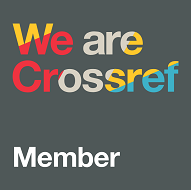The Enactment of Online Learning for Special Need Students during COVID 19 Pandemic: A Case Study
Abstract
Keywords
Full Text:
PDFReferences
Akhigbe, B. I., Munir, K., Akinade, O., Akanbi, L., & Oyedele, L. O. (2021). IoT technologies for livestock mana¬ge¬ment: a review of present status, opportunities, and future trends. Big Data and Cognitive Computing, 5(1), 10.
Arim, R., Findlay, L., & Kohen, D. (2020). The impact of the COVID-19 pandemic on Canadian families of children with disabilities. Statistics Canada= Statistique Canada.
Burleson, B. R. (2010). The nature of interpersonal commu-ni¬cation. The Handbook of Communication Science, 145–163.
Daniel, S. J. (2020). Education and the COVID-19 pandemic. Prospects, 49(1), 91–96.
De-Witt, P. (2020). Reasons students aren’t showing up for virtual learning. Education Week.
Drigas, A. S., & Ioannidou, R. E. (2013). Special Education and ICTs. International Journal of Emerging Technologies in Learning, 8(2), 41–47.
Fagell, P. L. (2020). Career confidential: Teacher wonders how to help students during coronavirus shutdown. Phi Delta Kappan, 101(8), 67–68.
Havercamp, S. M., Barnhart, W. R., Robinson, A. C., & Smith, C. N. W. (2021). What should we teach about disability? National consensus on disability competencies for health care education. Disability and Health Journal, 14(2), 1–9.
Holcomb, T. K. (2010). Deaf epistemology: The deaf way of knowing. American Annals of the Deaf, 154(5), 471–478.
Lambert, R., & Schuck, R. (2021). “The wall now between us”: Teaching math to students with disabilities during the COVID spring of 2020. The Asia-Pacific Edu¬cation Researcher, 30(3), 289–298.
Laster-Pirtle, W. N. (2020). Racial capitalism: A fundamental cause of novel coronavirus (COVID-19) pandemic inequities in the United States. Health Education & Behavior, 47(4), 504–508.
Lawrence, J. E., & Tar, U. A. (2018). Factors that influence teachers’ adoption and integration of ICT in teaching/learning process. Educational Media Inter-national, 55(1), 79–105.
Melo, E., Llopis, J., Gascó, J., & González, R. (2020). Integration of ICT into the higher education process: The case of Colombia. Journal of Small Business Strategy, 30(1), 58–67.
Musselman, C., & Kircaali-Iftar, G. (1996). The development of spoken language in deaf children: Explaining the unexplained variance. The Journal of Deaf Studies and Deaf Education, 1(2), 108–121.
Rahmadi, I. F. (2019). Technological Pedagogical Content Knowledge (TPACK): Kerangka pengetahuan guru abad 21. Jurnal Pendidikan Kewarganegaraan, 6(1).
Shepherd, C. M., & Alpert, M. (2015). Using technology to provide differentiated instruction for deaf learners. Journal of Instructional Pedagogies, 16, 1–7.
Smith, C., Tani, M., Yates, S., & Dickinson, H. (2022). Successful school interventions for students with disability during COVID-19: empirical evidence from Australia. The Asia-Pacific Education Researcher, 1–11.
Stake, R. E. (2006). Multiple case study analysis: Guilford press. In New York, NY.
Tukimin, S., Handayani, D., Alimin, Z., & Somad, P. (2019). Indonesia deaf and blind communication system (IDBC-system). Education and Information Technologies, 24(3), 2017–2033.
Warburton, S. (2009). Second Life in higher education: Assessing the potential for and the barriers to deploying virtual worlds in learning and teaching. British Journal of Educational Technology, 40(3), 414–426.
Yin, R. K. (2012). Application of case study research 3rd edition. SAGE Publication.Inc.
DOI: http://dx.doi.org/10.17977/um048v28i1p31-36
Refbacks
- There are currently no refbacks.
Copyright (c) 2022 Jurnal Ilmu Pendidikan

This work is licensed under a Creative Commons Attribution 4.0 International License.
| Jurnal Ilmu Pendidikan |
![]() Jurnal Ilmu Pendidikan is licensed under a Creative Commons Attribution 4.0 International License.
Jurnal Ilmu Pendidikan is licensed under a Creative Commons Attribution 4.0 International License.

2.png)
1.png)
1.png)
1.png)
1.png)
4.png)
.png)
1.png)
.png)
.png)


3.png)
1.png)
1.png)


